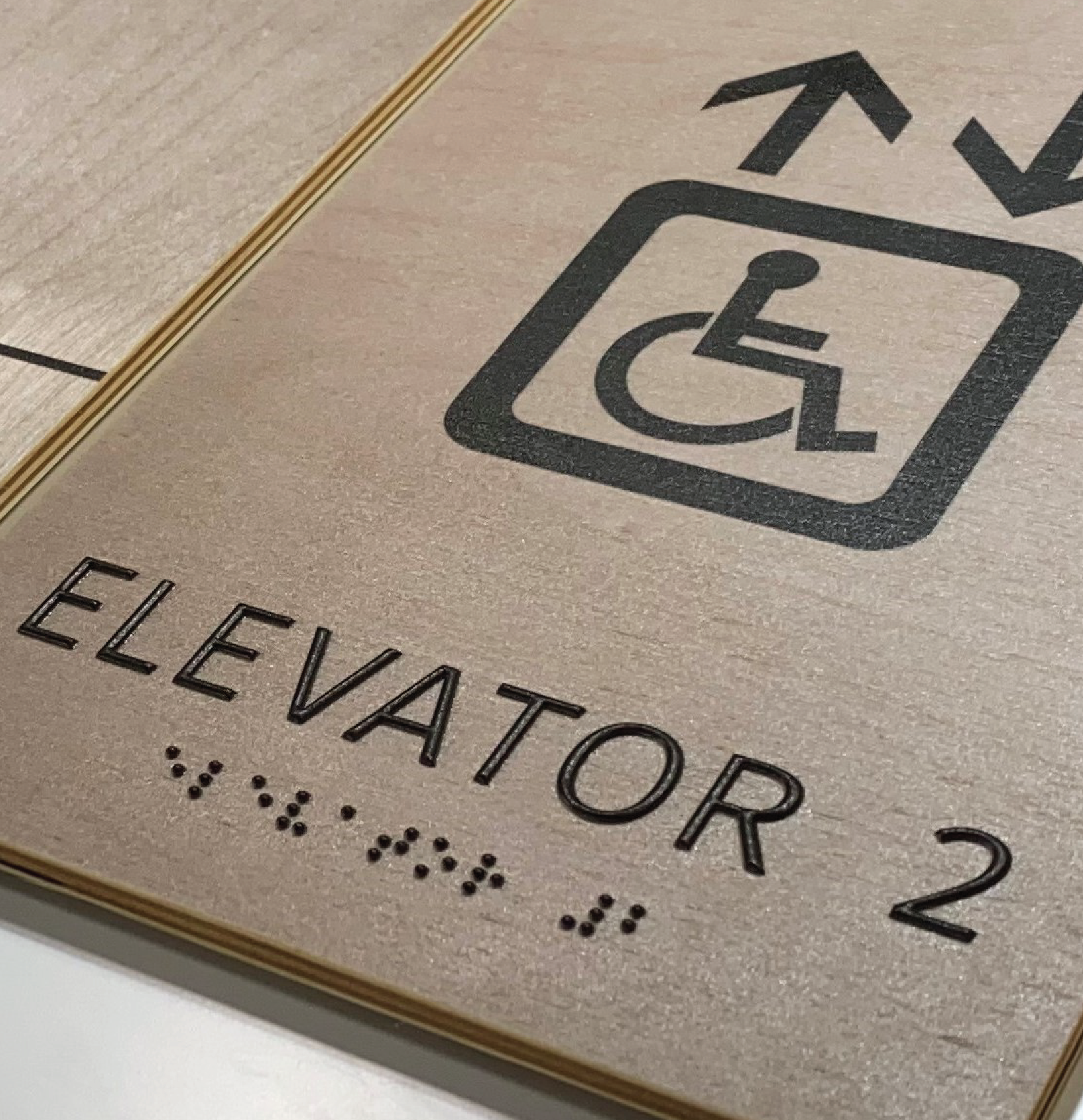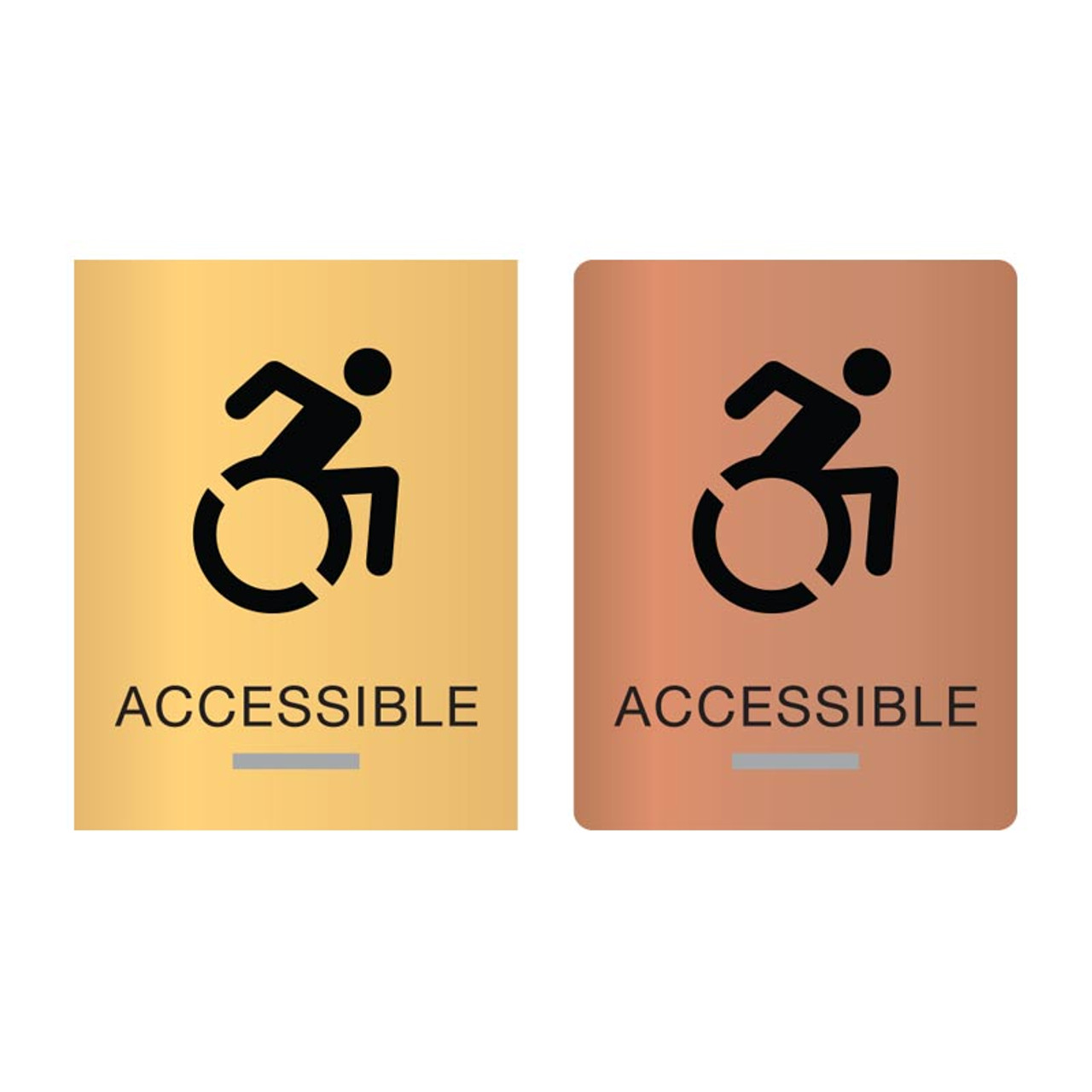The Role of ADA Signs in Complying with Access Specifications
The Role of ADA Signs in Complying with Access Specifications
Blog Article
Discovering the Trick Functions of ADA Indications for Enhanced Ease Of Access
In the realm of ease of access, ADA indications function as silent yet effective allies, making certain that rooms are accessible and comprehensive for people with disabilities. By incorporating Braille and responsive aspects, these signs break obstacles for the aesthetically impaired, while high-contrast color design and understandable typefaces deal with diverse visual demands. Moreover, their strategic positioning is not approximate however rather a calculated initiative to promote smooth navigation. Past these functions lies a much deeper narrative concerning the development of inclusivity and the ongoing dedication to producing equitable rooms. What a lot more could these indications represent in our pursuit of global ease of access?
Importance of ADA Conformity
Ensuring compliance with the Americans with Disabilities Act (ADA) is essential for cultivating inclusivity and equivalent gain access to in public areas and offices. The ADA, enacted in 1990, mandates that all public facilities, companies, and transport services fit people with disabilities, ensuring they appreciate the same legal rights and possibilities as others. Conformity with ADA standards not only meets legal responsibilities yet also improves an organization's track record by showing its commitment to diversity and inclusivity.
Among the key elements of ADA conformity is the execution of available signs. ADA indicators are designed to guarantee that individuals with handicaps can easily navigate via spaces and buildings. These indications have to stick to particular guidelines concerning size, font style, shade contrast, and placement to ensure presence and readability for all. Properly executed ADA signage aids remove obstacles that individuals with specials needs usually run into, therefore advertising their self-reliance and confidence (ADA Signs).
In addition, sticking to ADA policies can reduce the risk of possible penalties and legal effects. Organizations that fall short to adhere to ADA guidelines might deal with suits or penalties, which can be both destructive and economically burdensome to their public photo. Therefore, ADA compliance is indispensable to promoting an equitable setting for every person.
Braille and Tactile Aspects
The unification of Braille and responsive elements into ADA signage symbolizes the concepts of ease of access and inclusivity. It is normally positioned beneath the matching message on signs to ensure that people can access the details without aesthetic support.
Tactile aspects prolong past Braille and consist of elevated symbols and characters. These elements are created to be noticeable by touch, permitting people to recognize area numbers, toilets, exits, and other crucial areas. The ADA sets particular guidelines relating to the size, spacing, and placement of these responsive components to maximize readability and ensure consistency across various environments.

High-Contrast Color Pattern
High-contrast shade schemes play a pivotal duty in improving the visibility and readability of ADA signs for individuals with aesthetic disabilities. These schemes are crucial as they take full advantage of the difference in light reflectance in between text and history, ensuring that indicators are quickly noticeable, even from a range. The Americans with Disabilities Act (ADA) mandates making use of details color contrasts to suit those with restricted vision, making it an essential facet of compliance.
The effectiveness of high-contrast colors depends on their browse around here capacity to stick out in various illumination problems, including poorly lit environments and locations with glare. Normally, dark text on a light background or light message on a dark background is utilized to attain ideal comparison. For instance, black message on a yellow or white background gives a stark visual distinction that assists in quick acknowledgment and comprehension.

Legible Fonts and Text Size
When thinking about the see here now layout of ADA signs, the choice of readable typefaces and appropriate text size can not be overstated. These components are important for making certain that signs are easily accessible to people with visual impairments. The Americans with Disabilities Act (ADA) mandates that font styles need to be not italic and sans-serif, oblique, script, highly ornamental, or of uncommon kind. These needs help guarantee that the message is easily readable from a distance and that the characters are appreciable to varied target markets.
The size of the message additionally plays a pivotal function in availability. According to ADA standards, the minimum message elevation must be 5/8 inch, and it must raise proportionally with checking out distance. This is particularly vital in public spaces where signage requirements to be reviewed promptly and precisely. Consistency in message dimension contributes to a natural aesthetic experience, aiding people in browsing environments successfully.
In addition, spacing between lines and letters is essential to legibility. Appropriate spacing avoids personalities from appearing crowded, boosting readability. By adhering to these criteria, designers can dramatically improve access, guaranteeing that signs serves its designated purpose for all individuals, no matter their visual capacities.
Effective Placement Approaches
Strategic placement of ADA signs is important for making the most of access and guaranteeing conformity with lawful standards. Correctly located indicators direct people with handicaps efficiently, assisting in navigating in public spaces. Key considerations consist of visibility, height, and distance. ADA guidelines specify that indications must be installed at a height between 48 to 60 inches from the ground to guarantee they are within the line of sight for both standing and seated individuals. This common elevation array is essential for inclusivity, enabling wheelchair users and individuals of varying heights to access information effortlessly.
Furthermore, signs must be positioned nearby to the latch side of doors to permit simple identification prior to entrance. Consistency in indicator placement throughout a center improves predictability, decreasing complication and improving total individual experience.

Verdict
ADA signs play a crucial duty in promoting access by integrating functions that address the requirements of people with disabilities. Integrating Braille and responsive elements guarantees critical info is obtainable to the visually impaired, while high-contrast color systems and legible read here sans-serif fonts improve presence throughout various illumination conditions. Efficient positioning strategies, such as suitable installing elevations and critical locations, even more assist in navigating. These components jointly foster an inclusive atmosphere, highlighting the value of ADA conformity in making certain equivalent access for all.
In the world of accessibility, ADA signs offer as quiet yet effective allies, ensuring that rooms are inclusive and navigable for people with impairments. The ADA, passed in 1990, mandates that all public centers, employers, and transport solutions accommodate people with handicaps, ensuring they take pleasure in the same rights and possibilities as others. ADA Signs. ADA indications are created to guarantee that individuals with handicaps can quickly navigate via spaces and structures. ADA guidelines specify that signs ought to be mounted at an elevation between 48 to 60 inches from the ground to guarantee they are within the line of sight for both standing and seated people.ADA indications play a vital duty in promoting accessibility by incorporating features that resolve the requirements of people with specials needs
Report this page